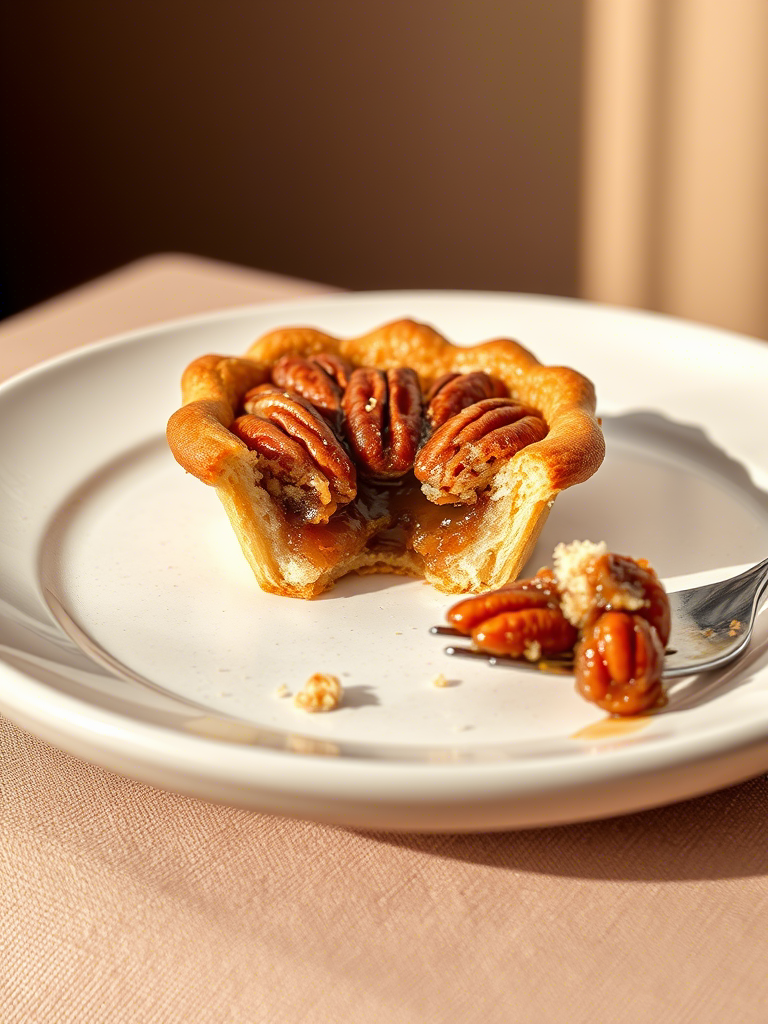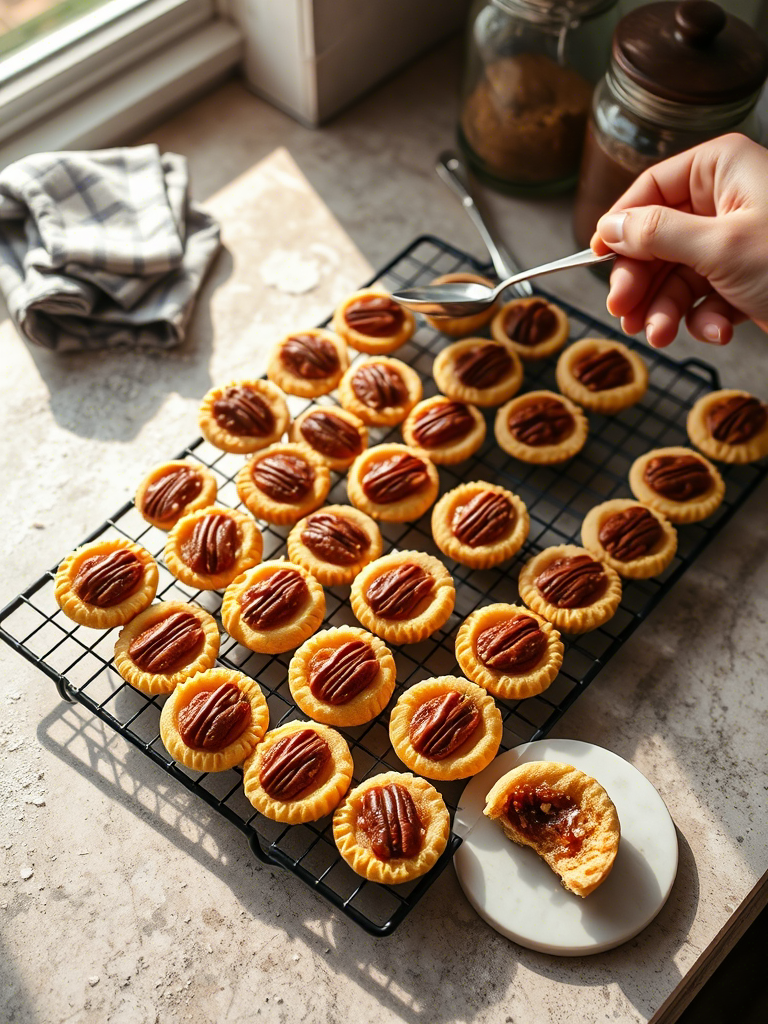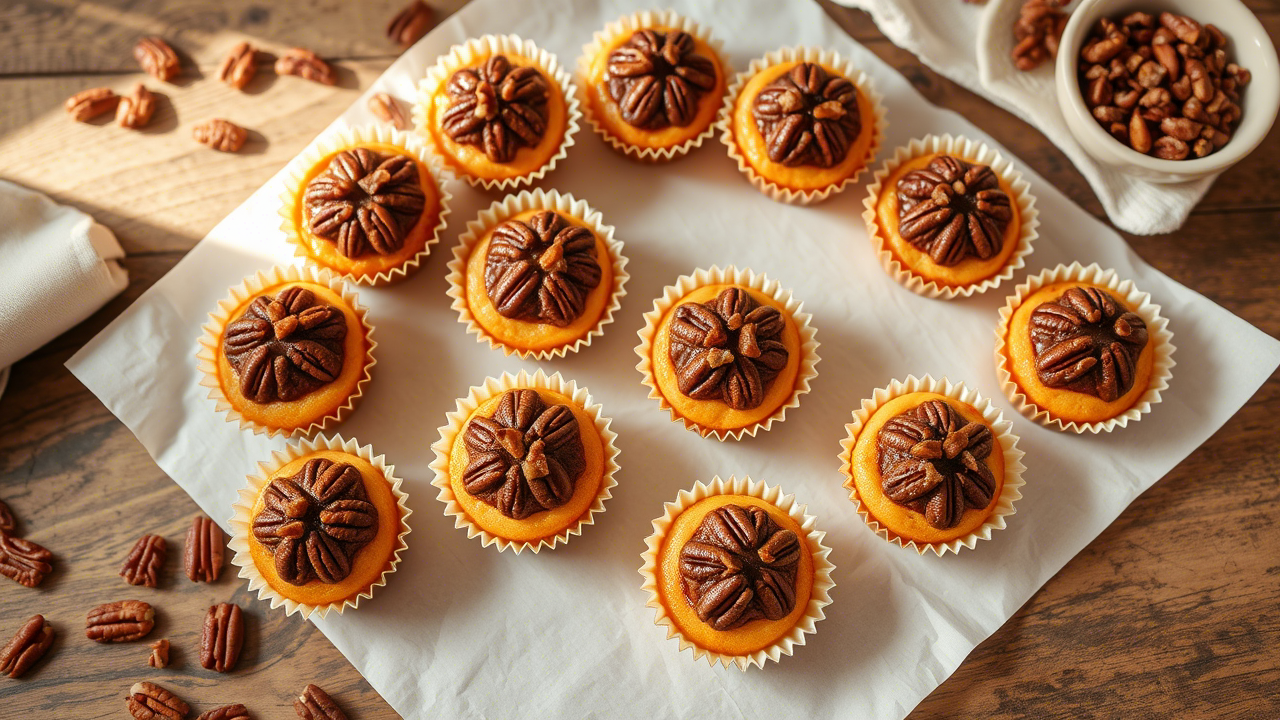You ever bite into something and think, “Okay, that’s it, I’m not sharing the rest”? That’s a pecan tassie. These tiny tarts might look like innocent little cousins of the pecan pie, but they pack a buttery, gooey punch that makes pastry chefs and home bakers alike come back to them again and again. They’re deceptively simple, dangerously addictive, and quietly perfect.
This guide isn’t just another fluffy recipe roundup. We’re going deep. We’ll break down the science of the dough, the caramelization of the filling, and what makes these miniature treats a staple in Southern baking, holiday tables, and pastry kitchens around the country. Whether you’re running a test kitchen or trying to elevate your holiday menu, there’s something in here for ya.
What Exactly Are Pecan Tassies?
Pecan tassies are small tartlets that resemble pecan pie, but they’ve got their own thing goin’ on.
They’re usually baked in mini muffin tins. The crust is more cookie-like than pie crust. Soft, crumbly, buttery.
The filling? A brown sugar-based custard with chopped pecans, often laced with vanilla or bourbon. Sometimes both.
They’re popular during Christmas in the U.S. South, but more and more, they’ve found their way into bakeries, brunch spreads, and coffee counters. Tassies are portable, rich, and just fussy enough to feel special.
A Quick Glance at the History
Like many great Southern desserts, the pecan tassie has roots in resourcefulness.
Pecans grow all over the Southern U.S., especially in Georgia and Texas. By the early 1900s, folks were already folding them into pies, puddings, candies.
The tassie came along as a variation—smaller, faster, better for gifting. It’s kinda the Southern answer to the French tartlet. Same elegance, way more butter.
By the 1950s, community cookbooks featured them regularly. Church ladies and PTA moms knew—these things win bake-offs.
The Anatomy of the Perfect Tassie
Let’s tear it apart, one layer at a time. Because when it comes to pecan tassies, the devil’s in the detail—and so is the delight.
The Crust: Cream Cheese Dough Done Right
Don’t you dare use store-bought pie crust. That’s blasphemy in tassie land.
Traditional tassie dough is made from a simple but magical combo:
- 1 cup unsalted butter (room temp)
- 6 oz cream cheese
- 2 cups all-purpose flour
- Pinch of salt
No sugar. That’s right. None. The sweetness should come from the filling.
Cream the butter and cream cheese until smooth. Add the flour gradually. It’s a sticky dough. Chill it for at least an hour or it’ll give you grief when pressing it into tins.
Why cream cheese? It gives the crust a tender crumb that melts, not crumbles. Also, slight tang = balance.
Pastry chefs like to call this a pâte sablée variant. It’s rich, but not shortbread-level heavy. It can be rolled or pressed, but don’t overwork it or the gluten’ll turn on ya.

The Filling: Gooey, Nutty Alchemy
This filling is why pecan tassies don’t get forgotten. It’s the sweet spot between syrupy and soft.
Here’s a classic ratio for one batch:
- 1 large egg
- ¾ cup packed brown sugar
- 1 tablespoon melted butter
- 1 teaspoon vanilla extract
- ¾ cup finely chopped pecans
You can tweak it endlessly. Sub in maple syrup for half the sugar. Add a splash of bourbon or dark rum for warmth. Orange zest for brightness.
But here’s the kicker: texture is everything. Chop the pecans too fine, and you lose crunch. Too chunky, and they don’t sit right in the custard.
That custard should puff just slightly in the oven, then settle. Not crack. Not overflow. If it’s cracking, you’re either overbaking or your oven’s running hot. Get a thermometer. Don’t guess.
Mini Muffin Tin = Non-Negotiable
Standard muffin pans are too large. Part of the charm is bite-sized indulgence.
A mini tin ensures the crust-to-filling ratio stays divine. More crust means more chew, more control.
If you’re scaling production (say for a bakery or pop-up event), invest in non-stick commercial-grade tins. Avoid silicone. It doesn’t brown the crust properly.
Tips from the Pro Kitchen
- Freeze the dough after pressing into the tin. That sets the shape and prevents slippage.
- Brush the crust with a bit of egg white before filling. Helps form a barrier so the custard doesn’t sog it up.
- Don’t fill all the way to the top. Three-quarters full is plenty. Overflowed tassies stick like crazy.
- Use a silicone pastry brush to release any syrupy edges post-bake. Saves time cleaning trays.
- Make ’em in batches, freeze, and reheat gently. They keep beautifully in airtight containers for 2–3 months.
Tassies in the Modern Bakery
They’re showing up in more places now. And in wild ways.
Think maple bacon pecan tassies. Chai spice filling. Pumpkin pecan hybrids. Or tassies with cocoa crusts and chocolate ganache bottoms.
And because they freeze so well, they’re becoming a favorite for catering menus and seasonal bakery boxes. Portion control meets decadent dessert? That’s a win-win.
Bakers are also experimenting with mini graham crusts or gluten-free almond flour versions. Not always traditional, but that’s the point—tassies are a perfect canvas.
The Economics: Why Tassies Sell
Here’s a quick breakdown of their bakery appeal:
- Low cost per unit: Basic ingredients. One batch makes 24–30 tassies.
- High perceived value: Looks dainty, feels luxurious.
- Great shelf life: Lasts 3–5 days at room temp. Up to 2 weeks refrigerated. Even better frozen.
- Quick bake time: 18–22 minutes. That’s fast turnover.
- Portion flexibility: Sell singles, bundles, or box sets. Perfect for giftable desserts.
Bakers who batch and freeze ahead of the holiday rush find tassies to be a sweet little cash cow. They look handcrafted even at scale.

Common Mistakes and How to Avoid ‘Em
Let’s just say… more than a few tassies have died tragic deaths in home kitchens. Here’s why:
- Overbaking the filling: It gets hard and crystallized. Use a timer. Don’t guess.
- Not greasing the tins: Rookie move. Even non-stick tins need a little butter or spray.
- Using too much flour in the dough: Makes the crust dense, not tender.
- Skipping chill time: Warm dough = shrunk shells = overflow.
- Overfilling: The filling bubbles and sticks. Tassies should never need to be chiseled out.
Just a bit of technique goes a long way. Once you dial in the crust and filling, tassies are practically foolproof.
The Flavor Pairing Game
A quick note for those serving tassies at events or restaurants—these little things play very well with others.
Here’s what works:
- Coffee: Medium roast or cinnamon-infused
- Port or Sherry: The nuttiness pairs perfectly
- Vanilla bean ice cream: A classic pairing. Keep it cold and clean.
- Candied orange peel or sea salt flakes on top: Adds dimension
- Dark chocolate drizzle: No explanation needed.
Tassies are small, but they handle bold flavors. Don’t be afraid to push pairings.
Frequently Asked Questions
Can I make them vegan? Yes, but you’ll need to use plant butter and a flax egg substitute. Texture changes slightly.
What’s the best way to ship tassies? Freeze first, wrap in parchment, then place in a snug tin or bakery box with padding. Ship overnight if possible.
Do they need to be refrigerated? Not necessarily, but refrigeration extends shelf life.
Can I use other nuts? Sure. Walnuts and hazelnuts work. Pistachios, too. But then… are they still tassies?
Are they gluten-free friendly? Only if you sub in a reliable GF flour blend for the dough. Keep the crust thin—GF dough can get crumbly fast.
Final Word: Tassies Are Tiny, But Mighty
There’s something special about the way pecan tassies hit the tongue—warm, rich, sweet, and salty all at once.
They’re the kind of dessert that feels like it has history. And love. And butter. Always butter.
If you’re a pro baker, they’re low effort and high reward. If you’re a home cook, they make you look like you trained in Paris.
Either way, don’t sleep on ’em. Bake a batch. Then try not to eat five before they cool.
You’ll fail. And that’s okay. They’re tassies. They’re meant to be irresistible.

Mariana is a passionate home cook who creates delicious, easy-to-follow recipes for busy people. From energizing breakfasts to satisfying dinners and indulgent desserts, her dishes are designed to fuel both your body and hustle.
When she’s not in the kitchen, she’s exploring new flavors and dreaming up her next recipe to share with the Foodie Hustle community.

